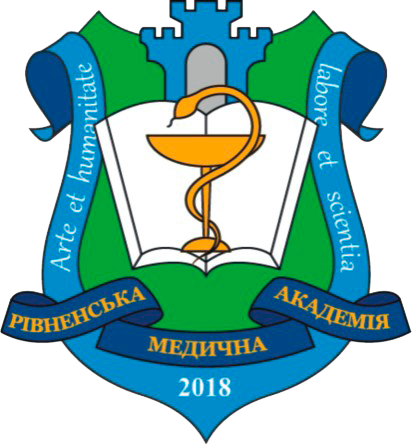DIAGNOSTIC METHODS FOR VIOLATIONS OF THE ROTATOR CUFF OF THE SHOULDER
DOI:
https://doi.org/10.32782/health-2023.4.26Keywords:
violation of the rotator cuff of the shoulder, diagnosis, instrumental methods of diagnosis, functional methods of diagnosisAbstract
Full function of the shoulder joint is important for ensuring a normal quality of life, and the rotator cuff of the shoulder plays a key role in its movements and stabilization. Disruption of this structure becomes a pervasive and potentially disabling problem, increasing social and medical costs. The article deals with violations of the rotator cuff of the shoulder, which can occur as a result of injuries or chronic degeneration. Risk factors include the same type of movements, injuries, heavy physical loads and individual characteristics of the structure of the shoulder joint. It is emphasized that effective diagnosis is important for determining optimal treatment. A clinical examination of the patient is provided with the help of specific tests that take into account the intensity of pain and functional disorders. Features of the disorder may vary depending on age, duration of the disease, traumatic factors and other factors, which makes clinical diagnosis difficult. The general approach to diagnosis takes into account the integration of clinical tests with modern methods of examination, such as radiography, ultrasound and magnetic resonance imaging. The importance of a comprehensive approach to ensure the accuracy and completeness of the diagnosis of shoulder rotator cuff disorders and the selection of an appropriate treatment plan for patients with this problem is noted. The main emphasis is on the CMS scale, which is the most common and long-term recommended for assessing the condition of patients with disorders of the shoulder joint. Its structure and components are described, including subjective and objective assessment of various aspects such as pain, daily activities, range of motion, and muscle strength. In addition, the article highlights the ASES scale, developed to quantify functional limitations and shoulder pain, and details its structure and additional questions that add objective information. Overall, the article is important to physicians and physical therapists involved in the diagnosis and treatment of shoulder rotator cuff disorders and provides a useful overview of tools for evaluating patients with this condition.
References
Вплив фізичної терапії на якість життя пацієнтів із коморбідними станами / О.Я. Андрійчук та ін. Art of Medicine. 2021. № 2. С. 7–14.
Сергієнко Р.О., Страфун С.С., Савосько С.І., Макаренко О.М. Структурні зміни плечового суглоба при експериментальному відтворенні його порушеної біомеханіки. Травма. 2016. № 17(4). С. 50–54.
Страфун С.С., Сергієнко Р.О., Богдан С.В., Аббасов С.М. Лікування деформуючого артрозу ключично-акроміального суглоба у хворих з ураженням ротаторної манжети плеча. Вісник ортопедії, травматології та протезування. 2018. № 2(97). С. 25–31.
Gismervik S.O., Drogset J.O., Granviken F., Ro M., Leivseth G. Physical examination tests of the shoulder: a systematic review and meta-analysis of diagnostic test performance. BMC Musculoskelet Disord. 2017;18(1):41. Published 2017 Jan 25. DOI: 10.1186/s12891-017-1400-0.
Jain N.B., Wilcox R.B. 3rd, Katz J.N., Higgins L.D. Clinical examination of the rotator cuff. PM R. 2013;5(1):45–56. DOI: 10.1016/j.pmrj.2012.08.019.
Oleksievich S.R., Semenovich S.S., Semenovich S.S., Mikolaevich M.O. (2017). Changes in the guinea pigs shoulder after creation of soft tissues contracture experimental study. IRONS. 21, 9–17.
Sharma G., Bhandary S., Khandige G., Kabra U. MR Imaging of Rotator Cuff Tears: Correlation with Arthroscopy. J Clin Diagn Res. 2017;11(5):TC24-TC27. DOI: 10.7860/ JCDR/2017/27714.9911.
Wylie J.D., Beckmann J.T., Granger E., Tashijan R.Z. Functional outcomes assessment in shoulder surgery. World J Orthop 2014 November 18; 5(5):623–33. Available at: https://doi.org/10.5312/wjo.v5.i5.623.





